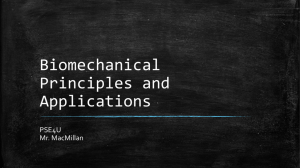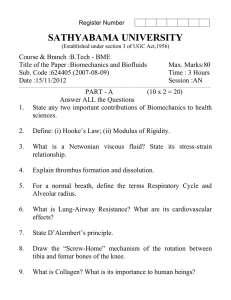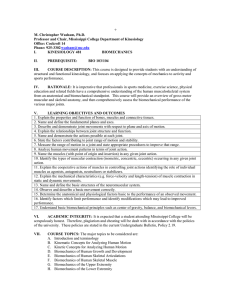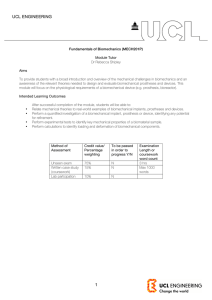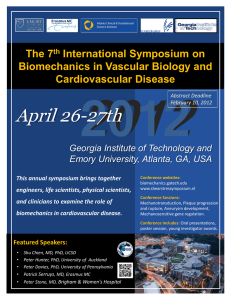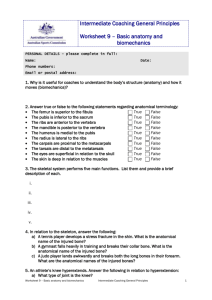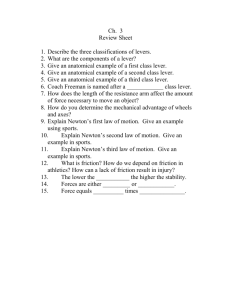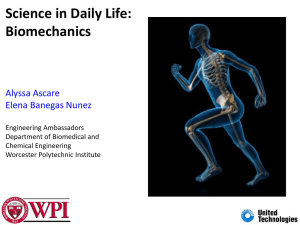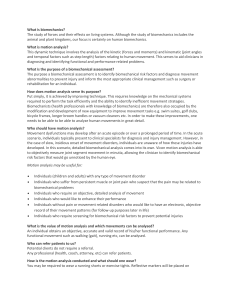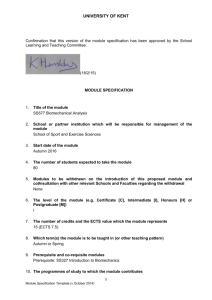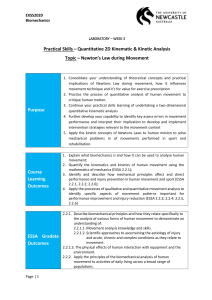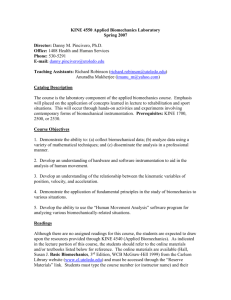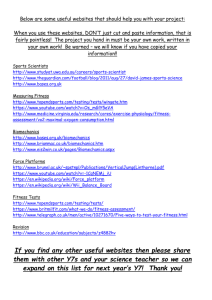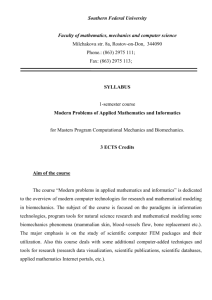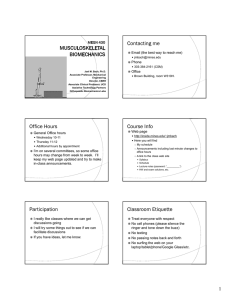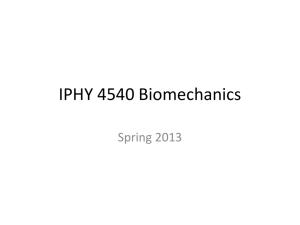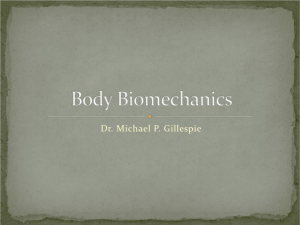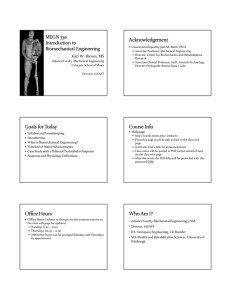Basic Biomechanical Principles Learning Objectives Basic concepts
advertisement
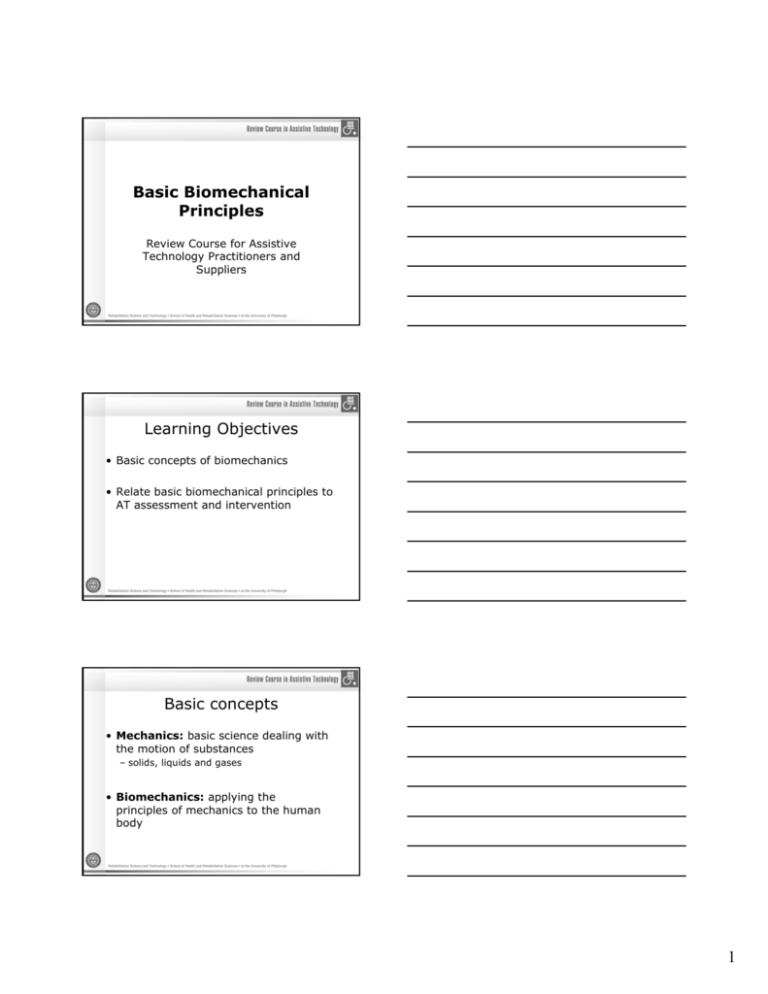
Basic Biomechanical Principles Review Course for Assistive Technology Practitioners and Suppliers Learning Objectives • Basic concepts of biomechanics • Relate basic biomechanical principles to AT assessment and intervention Basic concepts • Mechanics: basic science dealing with the motion of substances – solids, liquids and gases • Biomechanics: applying the principles of mechanics to the human body 1 Basic Concepts • Kinematics: the study of movement – Translational movement – Rotational movement • Kinetics: the study of forces Newton’s Laws of Motion • First: Inertia – a body at rest remains at rest until acted on by an external force • Second: Acceleration of a body will be directly proportional to any unbalanced force applied – Force =Mass X Acceleration or F=MA • Third: For every action, there is an equal and opposite reaction Forces • Cause an object to move or to change direction • Four characteristics – – – – Magnitude Direction Action line Point of application 2 Types of Forces • Compressive – two forces towards each other along the same line • Tensile – two forces away from each other along the same line • Shear – two forces away from each other parallel to each other Pressure • Pressure = total force/ contact area • If high forces are needed – increased contact area will decrease pressure • Example: pressure considerations may affect the choice of planar vs. contoured seating surface or materials used Friction • Force that resists motion of one body relative to another body – surface force – Resists ‘sliding’ – Increasing friction forces increases stability – Increasing friction forces increases shear within the body 3 Torque • A force that causes rotation of a body around an axis (AKA - Moment) Torque and lever arms • Torque = Force X perpendicular distance from the axis of rotation • Longer lever arm = lower force required • Example: when choosing a switch for an individual with severe weakness, may want to use a switch on a long lever to decrease force necessary (e.g. wobble switch) Motion concepts • • • • Producing vs. preventing movement Static equilibrium Dynamic equilibrium Balance of forces – essential in preventing movement • Provide “least restrictive” possible equipment – essential in enabling movement Cook and Hussey (2002), p. 175 4 Biomechanics References • Cook and Hussey (2002), pp. 173-175 • Nwaobi, O. M.: Biomechanics of Seating. In Trefler, E., editor; Seating for Children with Cerebral Palsy; a resource manual, Memphis, 1984, University of Tennessee 5
